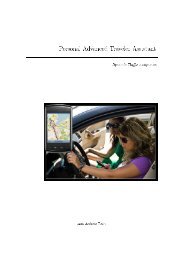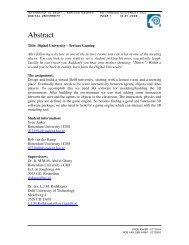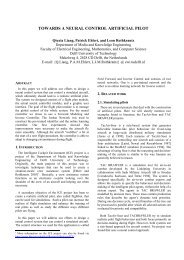Recognition of facial expressions - Knowledge Based Systems ...
Recognition of facial expressions - Knowledge Based Systems ...
Recognition of facial expressions - Knowledge Based Systems ...
You also want an ePaper? Increase the reach of your titles
YUMPU automatically turns print PDFs into web optimized ePapers that Google loves.
<strong>facial</strong> expression that is not expressed by the constituent AUs taken separately. In the<br />
case <strong>of</strong> the current project, the AU sets related to each expression are split into two<br />
classes that specify the importance <strong>of</strong> the emotional load <strong>of</strong> each AU in the class. By<br />
means <strong>of</strong> that, there are primary and secondary AUs. The AUs being part <strong>of</strong> the same<br />
class are additive. The system performs recognition <strong>of</strong> one expression as computing the<br />
probability associated with the detection <strong>of</strong> one or more AUs from both classes.<br />
The probability <strong>of</strong> one expression increases, as the probabilities <strong>of</strong> detected primary AUs<br />
get higher. In the same way, the presence <strong>of</strong> some AUs from a secondary class results in<br />
solving the uncertainty problem in the case <strong>of</strong> the dependent expression but at a lower<br />
level.<br />
Table 3. The dependency between AUs and intermediate parameters<br />
The conditioned probability tables for each node <strong>of</strong> the Bayesian Belief Network were<br />
filled in by computing statistics over the database. The Cohn-Kanade AU-Coded Facial<br />
Expression Database contains approximately 2000 image sequences from 200 subjects<br />
ranged in age from 18 to 30 years. Sixty-five percent were female, 15 percent were<br />
- 25 -
















